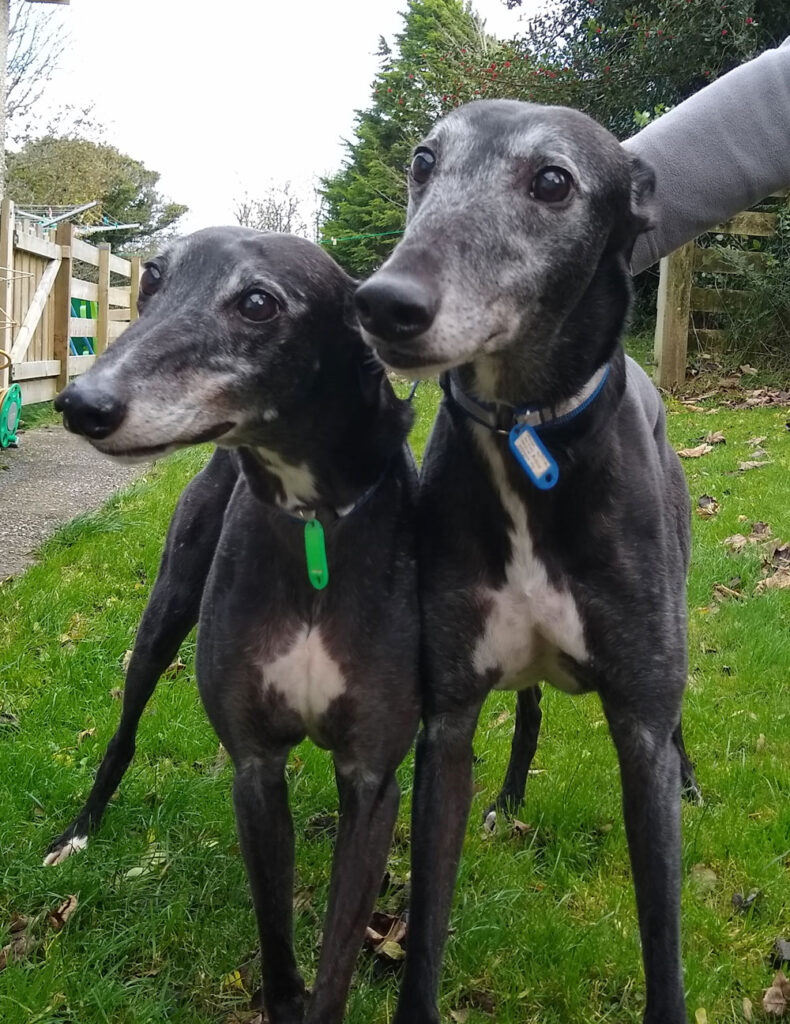Endless thousands of greyhounds have suffered the consequences of greyhound racing since it began 94 years ago. They continue to do so despite the industry’s now desperate attempts to sanitise its existence.
In 1959 I took employment in a trainer’s kennels and witnessed the insensitivity and suffering involved, including dogs often permanently muzzled as a solution to stressed behaviour caused by the conditions and lifestyle they were obliged to endure. No provision was made when injury, loss of speed or unsuitability for purpose ended their usefulness. The common instruction of owners to trainers was: “Give it away or have it put down.” I was taken aback.
Naively, I began advertising for homes, hoping they could then experience some kindness and comfort. I was swiftly instructed by the industry’s ruling body, the National Greyhound Racing Club (nowadays Greyhound Board of Great Britain) to stop immediately. I was told it made it look bad for greyhound racing, presumably because it made it publicly known that the discarded dogs were not provided for, but I discovered a darker side: it was quicker and more profitable to channel them into vivisection laboratories.
The callous instruction was ignored. Owners were always keen to offload their responsibility and glad if a home was found. Only a tiny minority of owners adopted their dogs themselves. Sadly, the need for homes exceeded the supply and as trainers wanted kennel spaces for new stock, I was still regularly required by my employer to despatch surplus discarded dogs by rail to an individual in Norfolk. I was told that he also found homes.
In order to home more dogs myself, I had begun advertising nationwide and contacted the British Union for the Abolition of Vivisection (BUAV) for the help of the experienced volunteers of its Derek Roy Homefinding Scheme for Greyhounds to check the responses for suitability. I asked them to also investigate the Norfolk individual who apparently could take any number of dogs. Responsible homefinding takes time, so he aroused suspicion. In fact, he supplied the dogs to vivisection laboratories. The trainers had lied. When confronted, it emerged that they knew of the dogs’ real fate. “At least they’re doing something useful” was their excuse.
Between 1959 and 1974 I was fortunate to build up a nationwide network of volunteer helpers and worked in association with the BUAV. Understandably, in response to pressure from its supporters who wished their donations to be used towards finding alternatives to vivisection, the BUAV eventually approached the NGRC and embarrassed it to address its own responsibility for the greyhounds. Having opposed advertising for homes for 15 years, the NGRC then had the audacity to ask for my list of contacts to form its Retired Greyhound Trust. Other homefinders, by then attached to various tracks, were also incorporated and required to cough up all monies raised, but fundings subsequently issued towards their homefinding expenses were virtually non-existent.
Eventually a £5 fee was added to the NGRC’s registration charge, similar to the so-called ground-breaking strategy recently employed by the GBGB, with most likely the same inadequate and worrying outcome. Many owners baulked at the imposition, then demanded or expected immediate homes for their retired dogs. This was rarely possible. The best that could be offered was that owners should advertise personally for homes, then contact RGT homing groups to check responses for suitability. Many did not bother with that time-consuming and possibly disappointing refinement, so dogs were off-loaded uncaringly. No records were requested.
Dogs could still be channelled into laboratories or abandoned with their earflap tattoos cut off to avoid traceability, so I asked the NGRC to require owners and trainers to provide details of their dogs’ destinations when their track careers ended. The request was not welcomed and, apart from RGT adoption forms eventually provided, the whereabouts of most discarded dogs remained unrecorded until more recent times when the industry has finally had to comply due to pressure by concerned animal welfare organisations. Even so, figures do not tally and concerns remain.
There are many skeletons in the greyhound industry’s cupboard, not least those of the discarded tools of its trade. A layered mass grave area of thousands of discarded racers was discovered by the Sunday Times in 2006. Low grade racers exported to appalling conditions in Spain, whose suffering the industry ignored for years, are just two examples.
Proof exists of the history outlined so denial is inappropriate and pointless.
Public exposure of the greyhound industry’s welfare failures prompted a balanced Parliamentary enquiry by APGAW in 2006. Fourteen years later its recommendations of a broadened regulatory body and compulsory contributions towards welfare by bookmakers remain unobserved. DEFRA fails its named responsibility for welfare by permitting it to be so.
Under the industry’s continued self-regulation, the dogs remain vulnerable and continue to suffer.
The GBGB states that stewards’ inspections are made twice yearly. The sad condition of dogs in a trainer’s kennels, as reported in the GBGB Calendar of 14th February 2020, indicated longer term neglect than six months. His welfare failures would, therefore, have been evident and should have been noticed much sooner if all stewards were competent and honoured their welfare responsibility. Retribution after the event is too late: the dogs have already suffered by then.
Without a broadened regulatory body, as recommended by APGAW and which could make proper care and conditions compulsory, the GBGB’s recently issued Code of Practice will continue to be ignored by the many trainers who favour their own traditional insensitive practices, including permanent muzzling as a solution to stressed behaviour. The more compassionate measures recommended are considered too time-consuming and unnecessary. The Animal Welfare Act 2006 is contravened and stewards apparently turn a blind eye unless of a conscientious nature.
The GBGB recently stated the figure of 16,800 greyhounds in registered trainers’ kennels. Others have already been born to follow in their footsteps. More are being bred. They all remain vulnerable despite the GBGB’s claim of Commitment to Welfare.
The GBGB’s claim of 90% homing is misleading. It does not cover unregistered dogs, even though they are all part of the industry’s production line and, dogs stockpiled in trainers’ kennels cannot fairly be classed as homed in the recognised sense of the word. There is no real quality of life and saturation point will quickly be reached, as homing groups already struggle to cope with the number needing help. What then?
The solution of ‘bolt gun and bury’ can provably be surreptitious and need not be declared as euthanasia which the industry is now committed to minimise. Research laboratories have also long been a favoured disposal channel. In due course, it will not be out of place to investigate.
Meanwhile, the coordinator of the recently launched GBGB’s Greyhound Retirement Scheme plans to harvest the services of other homing groups in addition to Greyhound Trust groups, thus depriving abandoned dogs and cruelty cases of their chance of a safe haven until lovingly homed. They often arrive as a result of careless homing. The suggestions that the industry should instead use approved and licenced boarding kennels nationwide for dogs on the waiting list for homes, financed from bookmakers’ bulging pockets, have so far been ignored, yet it would also advantageously provide opportunity for the greyhounds to socialise and other customers might often pursue the idea of adopting one.
Despite everyone’s efforts for whatever reason (cosmetic image or genuine compassion) the need for homes far exceeds the supply, even given the services of concerned volunteers and those who are opposed to greyhound racing. The latter are vilified by the industry, yet blatantly used to its own advantage, including many members of the public on whom the industry prevails to provide homes. Unwittingly, they protect its image by doing so.
It cannot be an offence to be opposed to greyhound racing. It is an offence to contravene the Animal Welfare Act 2006.
Covid 19 has already proved that life can well go on without live greyhound racing, plus: it can be replaced by virtual greyhound racing to raise equal revenue and accommodate people’s gambling requirements without causing endless more thousands of greyhounds to suffer.
Live greyhound racing is a disgraceful 94 year old chapter in our history. On humane grounds, may it never make it to a hundred years.
Sincerely
Ann Shannon October 2020


4 replies on “Testimonial of a greyhound advocate”
Thank you.
A long sad article written by a person with lifelong experience.
This gambling industry must stop.
Our Govt must cease subsidising racing.
Use your voice and your vote as united we can make a change.
I found this article to sickening to read properly, but anyway, enough to understand the need to stop greyhound racing completely.
There should be more publicity to make the general public more aware of what happens to these hounds.
Cruelty to animals is an offence.this suld be enforced. But as it will continue to HHappen animals suffer. Stop greyhound racing.